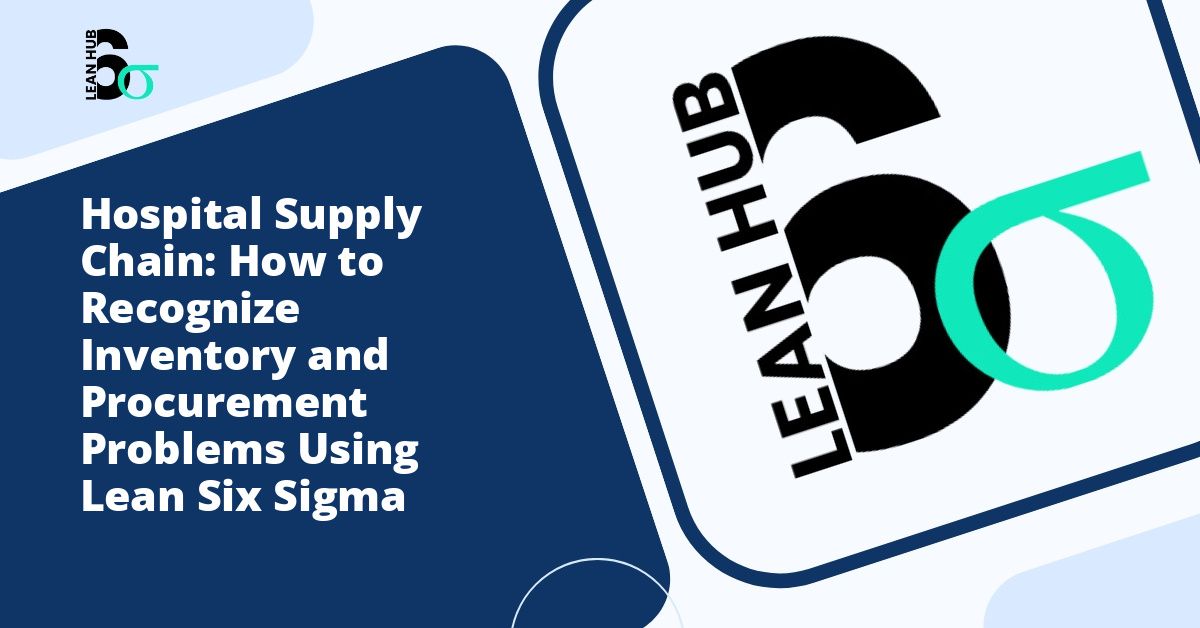Healthcare facilities worldwide face mounting pressure to deliver exceptional patient care while managing costs effectively. At the heart of this challenge lies the hospital supply chain, a complex network responsible for ensuring that medical supplies, equipment, and pharmaceuticals are available when and where they are needed. Unfortunately, many hospitals struggle with inventory and procurement problems that lead to wasteful spending, stockouts, and compromised patient care. Understanding how to recognize these issues is the critical first step toward implementing effective solutions.
The Critical Role of Hospital Supply Chains
Hospital supply chains represent one of the largest expense categories in healthcare operations, typically accounting for 30 to 40 percent of total operating costs. These systems must balance the delicate equation of maintaining adequate inventory levels while avoiding overstocking, which ties up capital and risks product expiration. When supply chain problems go unrecognized or unaddressed, the consequences extend far beyond financial waste. Patient safety may be compromised, staff productivity decreases, and the overall quality of care suffers. You might also enjoy reading about Big Data and AI: Modern Approaches to the Recognize Phase in Lean Six Sigma.
The complexity of hospital supply chains makes problem recognition particularly challenging. Unlike retail or manufacturing environments, healthcare facilities must manage thousands of unique items, from common supplies like bandages and syringes to specialized surgical instruments and life-saving medications. Each category comes with its own set of procurement challenges, expiration concerns, and usage patterns. You might also enjoy reading about The Champion's Role in the Recognize Phase: Your Complete Guide to Lean Six Sigma Success.
Understanding the Recognize Phase in Lean Six Sigma
Many healthcare organizations turn to lean six sigma methodologies to address supply chain inefficiencies. This data-driven approach combines lean manufacturing principles with Six Sigma quality control techniques to eliminate waste and reduce variation in processes. The recognize phase, while not traditionally labeled as such in classic DMAIC (Define, Measure, Analyze, Improve, Control) methodology, represents the crucial initial period where organizations identify problems and prepare for systematic improvement. You might also enjoy reading about Risk Assessment in the Recognize Phase: What Could Go Wrong in Your Lean Six Sigma Project?.
During this recognize phase, healthcare administrators and supply chain managers must develop a clear understanding of what constitutes normal versus problematic performance. This requires establishing baseline metrics and creating awareness among stakeholders about the impact of supply chain inefficiencies on organizational goals. Recognition is not merely about acknowledging that problems exist; it involves pinpointing specific pain points, understanding their root causes, and building consensus around the need for change.
Common Inventory Problems in Healthcare Settings
Recognizing inventory problems begins with understanding the most common issues that plague hospital supply chains. These challenges often hide in plain sight, masked by workarounds and normalized inefficiencies.
Overstocking and Excess Inventory
Many healthcare facilities maintain excessive inventory levels out of fear of stockouts. While understandable, this approach ties up valuable capital in supplies sitting on shelves. Overstocking also increases the risk of product expiration, particularly for medications and sterile supplies with limited shelf lives. Signs of overstocking include overflowing storage areas, frequent product expirations, and difficulty locating specific items amid clutter.
Stockouts and Emergency Orders
On the opposite end of the spectrum, stockouts force clinical staff to delay procedures, substitute less appropriate products, or place emergency orders at premium prices. Frequent stockouts indicate poor demand forecasting, inadequate safety stock levels, or unreliable supplier relationships. Healthcare organizations can recognize this problem by tracking the frequency of emergency orders, instances where procedures are delayed due to missing supplies, and staff complaints about product availability.
Poor Inventory Visibility
Many hospitals lack real-time visibility into their inventory levels across different departments and storage locations. Without accurate, up-to-date information, supply chain managers cannot make informed decisions about reordering, redistribution, or usage patterns. Signs of poor inventory visibility include frequent physical inventory counts that reveal discrepancies, inability to quickly locate specific items, and duplicate ordering across departments.
Inefficient Storage and Organization
Disorganized storage areas create waste in the form of time spent searching for supplies, increased risk of using expired products, and potential for damage to improperly stored items. Healthcare professionals should be able to quickly locate needed supplies without extensive searching. If staff regularly complain about difficulty finding items or if storage areas appear chaotic and inconsistent, organization problems likely exist.
Procurement Challenges That Impact Hospital Operations
Inventory problems often stem from underlying procurement issues. Recognizing these procurement challenges is essential for developing comprehensive solutions.
Fragmented Purchasing Decisions
When individual departments or physicians make independent purchasing decisions without coordination, hospitals lose opportunities for volume discounts and create unnecessary product variety. This fragmentation also complicates inventory management, as the organization must stock multiple products that serve essentially the same purpose. Signs include excessive product variety within single categories, wide price variation for similar items, and lack of standardized protocols for product selection.
Inadequate Supplier Management
Relationships with suppliers directly impact inventory performance. Late deliveries, quality issues, and poor communication from suppliers create ripple effects throughout the supply chain. Healthcare organizations should monitor supplier performance metrics such as on-time delivery rates, order accuracy, and responsiveness to issues. Frequent supplier-related problems indicate the need for better vendor management strategies.
Manual and Paper-Based Processes
Many hospitals still rely on manual processes for ordering, receiving, and tracking supplies. These labor-intensive methods are prone to errors, delays, and lack the data capture necessary for meaningful analysis. Signs of this problem include extensive paperwork associated with procurement activities, frequent data entry errors, and inability to quickly generate reports on spending patterns or inventory levels.
Techniques for Problem Recognition
Effectively recognizing supply chain problems requires systematic approaches and engagement from multiple stakeholders.
Data Collection and Analysis
Begin by gathering quantitative data on key performance indicators such as inventory turnover rates, carrying costs, stockout frequency, emergency order rates, and product expiration rates. This baseline data reveals patterns and trends that may not be apparent through casual observation. Even organizations without sophisticated analytics capabilities can start with basic metrics tracked in spreadsheets.
Stakeholder Interviews and Surveys
Frontline staff, including nurses, physicians, and central supply personnel, experience supply chain problems firsthand. Conducting interviews or surveys with these stakeholders uncovers qualitative insights that complement quantitative data. Ask about their daily frustrations, workarounds they have developed, and suggestions for improvement.
Process Mapping and Observation
Walking through the physical flow of supplies from receiving to storage to point of use reveals inefficiencies that may be difficult to recognize from afar. Document the steps involved in ordering, receiving, stocking, and retrieving supplies. Look for unnecessary movement, waiting time, duplicate efforts, and other forms of waste.
Benchmarking Against Best Practices
Comparing your organization’s performance against industry benchmarks and best practices helps identify gaps and opportunities. Professional associations and healthcare consulting firms publish data on typical inventory turnover rates, carrying costs, and other metrics that provide context for your performance.
Moving Forward After Recognition
Once supply chain problems are recognized and documented, healthcare organizations can proceed with systematic improvement efforts. The lean six sigma framework provides a structured methodology for moving from recognition through problem-solving and sustainable change. Recognition itself, however, remains the foundation upon which all subsequent improvements are built.
Leaders must create organizational awareness about identified problems and build consensus around the need for change. This involves presenting data in compelling ways, connecting supply chain performance to patient care outcomes, and demonstrating the financial impact of current inefficiencies. Without this recognition and buy-in from key stakeholders, improvement initiatives are likely to stall or fail.
Conclusion
Hospital supply chain management is a critical component of healthcare operations that directly impacts patient care quality, staff satisfaction, and financial performance. Recognizing inventory and procurement problems represents the essential first step toward creating more efficient, cost-effective systems. By systematically identifying issues through data analysis, stakeholder engagement, and process observation, healthcare organizations position themselves for successful improvement initiatives. Whether applying lean six sigma methodologies or other problem-solving frameworks, the recognize phase establishes the foundation for meaningful, lasting change in hospital supply chain operations.








